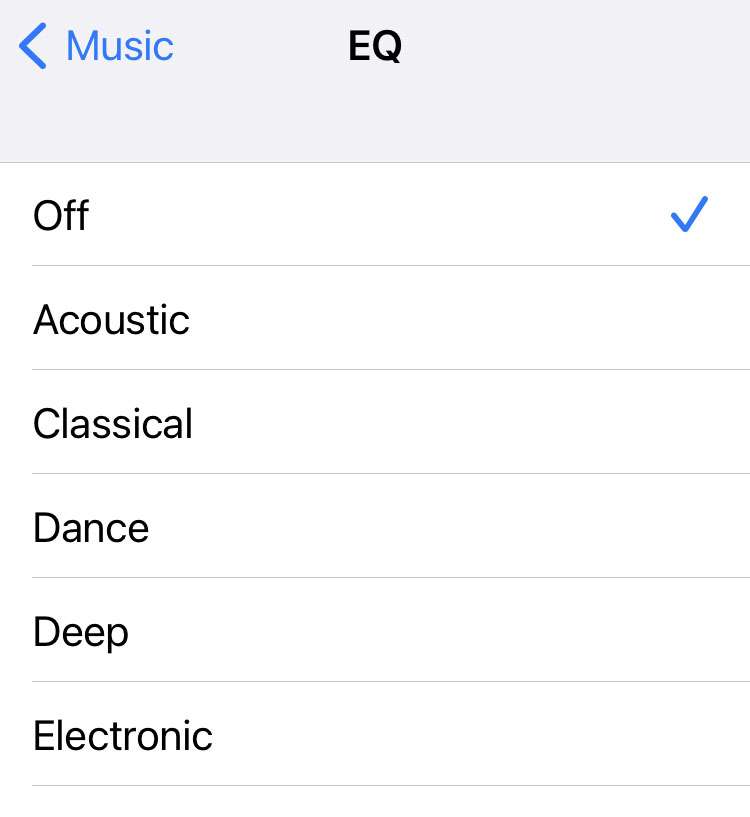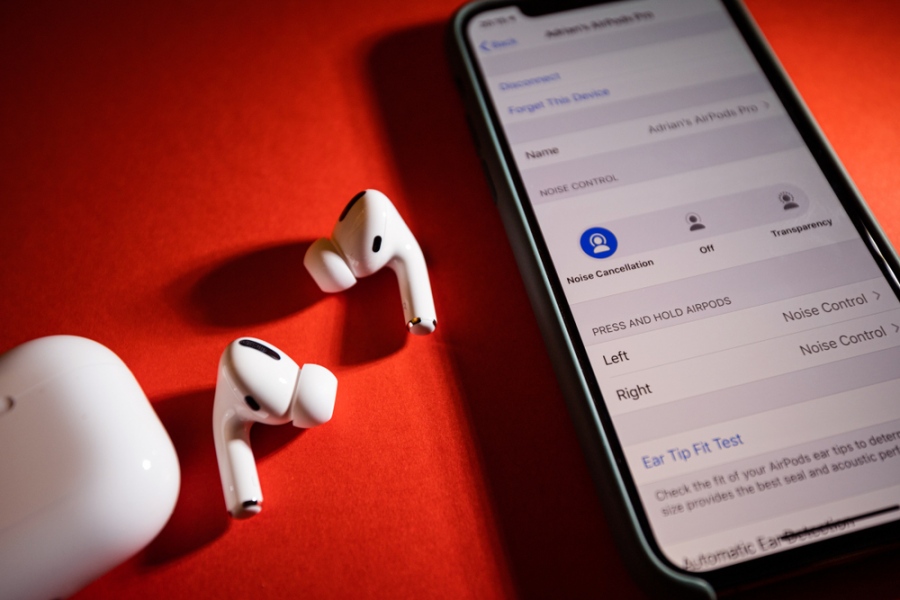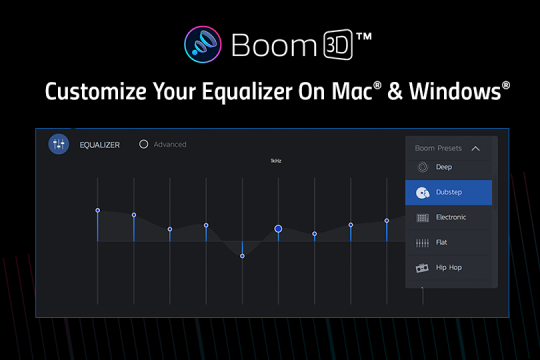Dr. Pepper isn’t the only drink with 23 varieties. Learn about the 23 built-in iPhone equalization presets and the top three alternatives. You take out your iPhone and listen to your favorite playlist to drown out the noise so you can concentrate on your studies. But something is striking me differently now. The noises are unimpressive and will not provide you with the enthusiasm you require for a long study session. Fortunately, you must have heard about the EQ Setting on IOS and you can try to experiment with them. Instead of basic sliders, you’re presented with a list of 23 possibilities from which to choose. It’s time to study, not run through a list!
Don’t be discouraged! You’ve come to the right place if you want to grasp the settings quickly. We’ve also compiled a list of apps you may use to further customize the sound on your iPhone. Continue reading!

How to Use Your iPhone or iPad’s Equalizer
Changing the EQ Setting on IOS is a straightforward operation that can be accomplished by picking a preset from the Music settings menu.
These, like all equalizers, modify the relative power of various frequencies. Simply put, equalizers change the strength of your music’s bass, middle, treble, and any other frequencies in between. The optimum equalization settings enhance the music you’re listening to enjoyably.
To begin, locate the equalizer on your iPhone and iPad:
- Go to the Settings menu.
- Scroll down and click on Music.
- Choose EQ. It may say “off” for now, but selecting a setting will turn it on.
- Choose one of the presets offered.
Do you know which equalizer setting to use? Continue reading to learn what each iPhone equalizer option does.
What Are iPhone Equalizer Presets and What Do They Do?
Some equalizers allow you to establish custom settings utilizing sliding bars and sophisticated options. The built-in EQ Setting on IOS, on the other hand, only offers 23 presets to pick from.
The advantage of this approach is that the equalizer options have been expertly developed to accommodate most tastes and music styles. Sadly, with only a few presets to pick from, it can be tough to understand. Each option has the following effect:
Preset Options
- Acoustic: Focuses on the bass and high notes while delicately balancing the mids. Probably intended for listening to acoustic music rather than electronic music.
Bass Booster: Increases the emphasis on deep bass tones. For a cool impact, use it with bass headphones. - Bass Reducer: Diminishes deep bass tones.
- Classical: Lowers the mids to emphasize the striking high-pitch and gloomy deep-pitch moments.
- Dance: Emphasizes deeper bass notes so you can feel the beat while still delivering the song-defining mids with full force.
- Deep: Emphasizes bass and mids, allowing you to concentrate on the music’s bass passages without jeopardizing the song’s overall integrity. To put it another way, the “deeper” qualities of the song are enhanced while the high trebles are reduced.
- Electronic: Increases the contrast by enhancing deep beats with a modest emphasis on high notes. This is ideal for listening to the best EDM music.

- Flat: A situation that is neutral and has little effect.
- Hip-hop: Deemphasizes the upper mids, allowing the beats and rhythmic character of hip-hop lyrics to flourish. It lowers the mids to bring out the swingy punches of the alto sax. Test it with a playlist of bebop jazz.
- Late night: Contrary to its name, late night makes your music sound louder. It accomplishes this by increasing volume during calm sections and decreasing level during noisy sections. Although the procedure degrades music quality marginally, some individuals enjoy “late-night” audio quality.
Some Other Preset Options
- Latin: A tuning that emphasizes higher-pitched instruments and voices. Consider this equalizer the next time you hear the marimba. The loudness emphasizes the bottom tones. Does not raise actual volume. Check out “late night” above if you want to make your music louder.
- Lounge: Emphasizes mids and reduces bass notes to create a lively lounge music vibe.
While this option adheres to the overall patterns of “classical” above, it emphasizes several specific mids to help you get the most out of piano listening. - Pop: Emphasizes the midrange to emphasize catchy lyrics. In terms of total effect, “spoken word” is very comparable.
- R&B: Similar to “hip-hop” above, but includes high-pitched noises, too.
- Rock: Provides a V-shaped listening experience, with highly emphasized high and low tones gradually meeting at a low-key mid-tone.
- Tiny speakers: Emphasize lower frequencies while gradually de-emphasizing everything as tones rise in pitch. For the best results, use a portable boombox.
- Speaking word: Similar to “pop” above, spoken word emphasizes mids. Spoken word differs from pop in that the highlighted mids span a wider range and tend to be higher-pitched. It works perfectly with the greatest audiobook headphones.
- Treble Booster: Increases the prominence of high-pitched sounds.
- Treble reducer: Reduced the volume of high-pitched noises.
- Voice booster: Hits the same pitches as “spoken word,” but without as much bass and treble damping.

Top 3 iOS Third-Party Equalizer Applications
You’ll need to download third-party software if you want more control over your EQ Setting on IOS or to affect things outside of Apple Music. A fast search on the App Store for “equalizer” yields dozens of results. Thankfully for you, we’ve narrowed it down to three excellent iOS equalization options:
Boom
Bass Booster & Equalizer is a slider-based equalization that allows you to build your own personalized sound. It also offers surround sound and extra bass settings to enhance your listening experience. To keep current and provide new features, the software is updated pretty frequently. Boom, for example, released separate settings for Bose and Sony headphones earlier this year. Boom can even connect to other apps like Spotify to play your playlists through Boom. It also handles DRM and DRM-free music playlists by simply not working during DRM tracks. Although your Boom experience should be smooth, minor issues and freezes may occur with specific file types. Boom offers a one-week free trial before being paid for either a monthly/annual membership or a one-time complete purchase.
You can also download the app here : Click to download

Equalizer Pro Plus
Equalizer Pro Plus is a visually appealing graphic equalizer that allows you to customize your own equalizer settings. You can save as many as you like and use various equalizer settings for each song.
The program works well with songs downloaded from iCloud and supports various other formats, including FLAC, OGG, MP3, APE, and WAV. Equalizer Pro + also uses only 32.4 MB, which is nearly a fourth of the amount of space used by the other apps on our list. The lack of a trial period is frustrating, but even at full purchase, Equalizer Pro Plus costs less than $7. If you’re someone who frequently downloads music, it’s worth a go.
Evermusic Professional
Evermusic Pro is a cloud player that includes equalization. The app’s equalizer not only provides genre-specific presets but also allows you to fine-tune your settings. You will also utilize a preamplifier gain with Evermusic Pro to raise the volume of your music. It can recognize and play songs from online services like as Google Drive, Dropbox, and a slew of others. Evermusic Pro also provides some unexpected advantages. For example, interface optimization for Apple CarPlay is a pleasant addition for safer use during lengthy rides. Another excellent touch were audiobook bookmarks.
Conclusion
You now have complete control over your iPhone’s equalization settings. It might be as simple as selecting the best preset or running your music through an equalizer program. We’d love to hear how you use the presets. Do you listen to hip hop using unintentional combinations like “Dance”? We’d love to hear what you’ve discovered and your thoughts on the strange song/EQ presets out there. Tell us in the comments!




